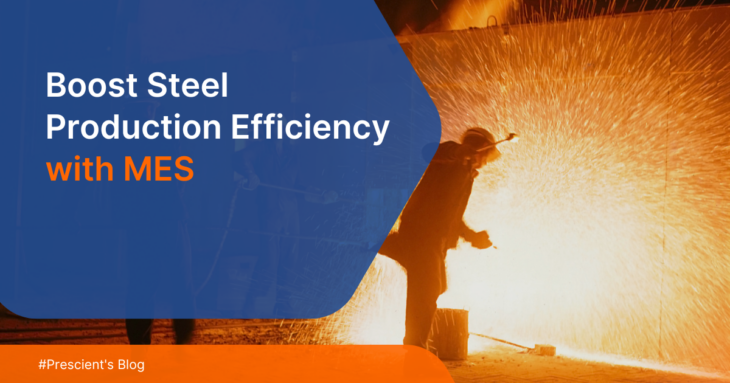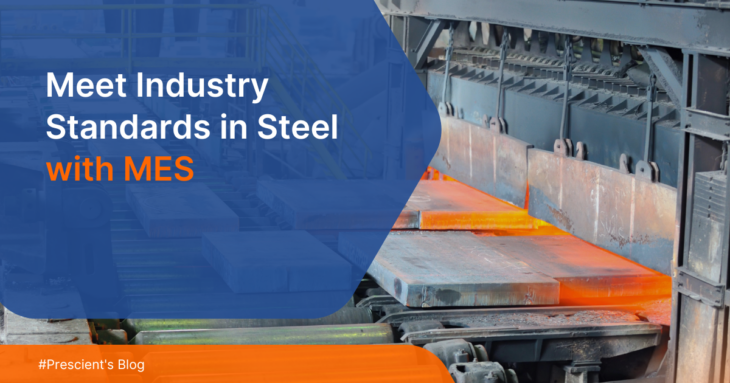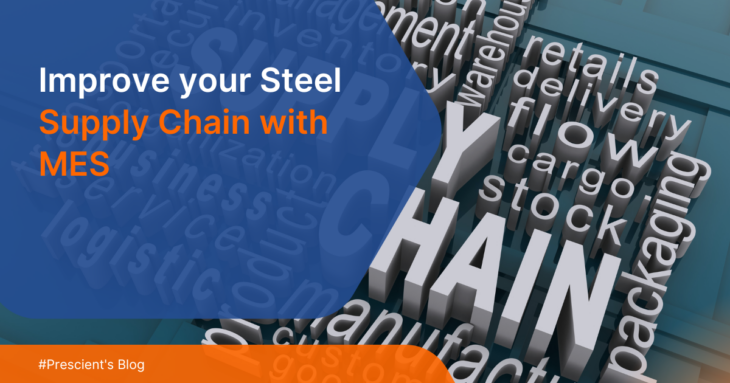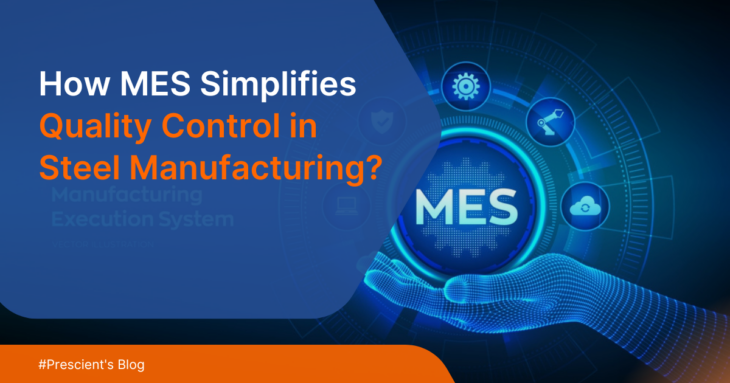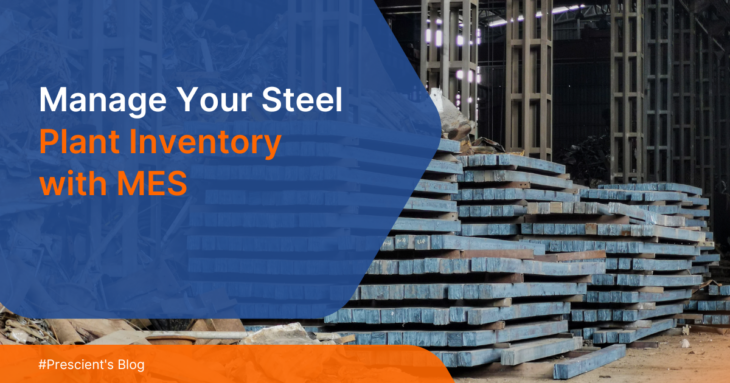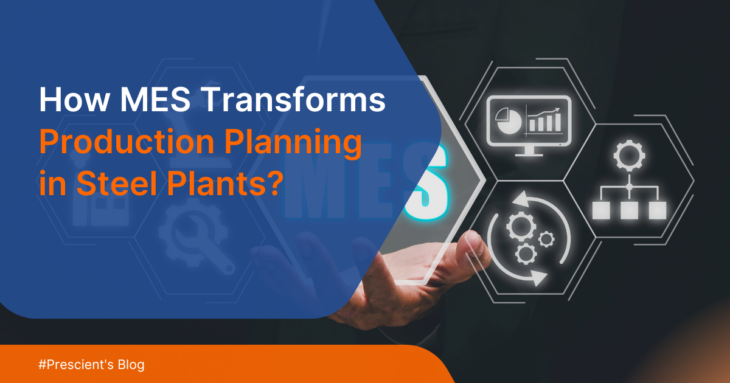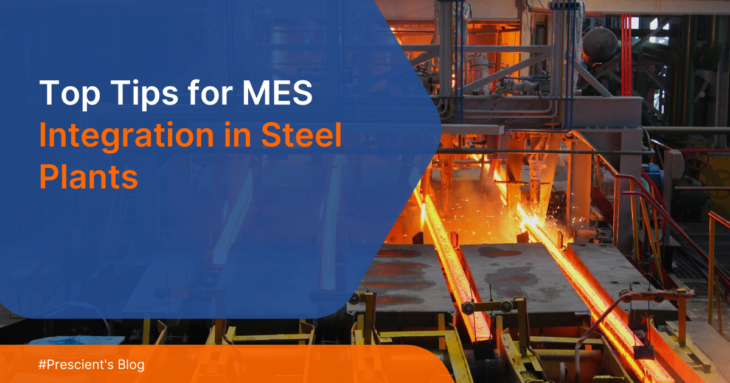Types of Energy Management Systems
Sustainability is now a business necessity. Energy optimisation has become critical for companies across sectors. Rising energy costs and environmental regulations have propelled the adoption of Energy Management System Software. These systems reduce costs and contribute to a greener planet. They ultimately minimise energy waste. Knowing each type of energy management system is crucial to helping businesses improve efficiency and succeed. Let’s look at the applications and the value propositions these systems uphold. What Are the Four Types of Energy Management? EMS belongs to diverse use applications. These mainly include the four types described next: 1. Building Energy Management Systems (BEMS) BEMS optimises energy usage in commercial and institutional buildings. Example: A corporate office using BEMS can reduce energy consumption by 20%. It can change HVAC settings based on occupancy. 2. Industrial Energy Management Systems (IEMS) IEMS is tailored for manufacturing and production facilities. It focuses on reducing energy-intensive operations. Example: 25% of energy usage can be reduced in a factory through predictive maintenance. 3. Residential Energy Management Systems (REMS) REMS for home and housing complexes, wherein smart devices can automatically control the usage of energy Example: A homeowner can save 10% on energy by using a REMS app. The app can time the running of high-energy appliances during off-peak hours. 4. Utility Energy Management Systems (UEMS) UEMS is for utility companies that focus on the grid energy distribution level. Example: A utility company can use UEMS to control peak demand during a heatwave, avoiding power cuts while still being energy efficient. What Are Examples of Energy Management Systems? Energy Management Systems have been applied in many industries: Hypothetical Case: A logistics firm using EMS to monitor and manage warehouse energy usage will reduce its energy costs by 30%. Such is the direct business value offered by the system. How do you select the appropriate EMS? In essence, the features offered by EMS must match the business’s requirements. Some factors that dictate the selection are scalability, real-time analytics, and ease of integration. What Are the Components of Energy Management Systems? Energy Management System Software consists of three essential elements: 1. Real-Time Monitoring 2. Automated Controls 3. Energy Forecasting Value Proposition: These parts collectively reduce operational expenses, ensure environmental compliance, and support sustainability. For example, digital logbooks can record and analyse factory data online, saving thousands of dollars annually in paper resources. What is the Difference Between EMS and SCADA? EMS and SCADA are both critical components of modern industrial operations. However, they serve different purposes: Energy Management System (EMS) SCADA Synergy: EMS and SCADA integrate energy-specific information with comprehensive process control. In doing so, businesses can take full advantage of their resources in a way that leads to enhanced efficiency. How Do EMS Systems Add Value? Energy Management Systems offer quantifiable benefits: 1. Cost Efficiency 2. Improved Operational Efficiency 3. Sustainability Objectives Conclusion Energy efficiency is increasingly becoming a competitive differentiator. Hence, energy management systems are essential for businesses that want to be ahead of their competitors. Integrating digital logbooks and energy forecasting further enhances their effectiveness. Adopting an EMS pays off in the long run. They can help reduce costs and future-proof operations. Transform Your Energy Management with powerCONNECT Take charge of your energy use with powerCONNECT, the latest Energy Management System Software from Prescient Technologies. It is designed to maximise energy usage and achieve sustainability goals. Its features include real-time monitoring and predictive analytics. Both these latest technologies are available with a customisable dashboard. Power up your operations with actionable insights and unmatched efficiency. powerCONNECT is the scalable solution to stay competitive in today’s energy-conscious world. Get on the right path toward your goal of smarter and greener operations. Learn more about how Prescient Technologies can help. Schedule a demo today!
Read MoreThe Impact of MES on Production Efficiency in Steel Industry
In the steel industry, production efficiency comes down to optimizing every aspect of the manufacturing process and not just cutting costs across the plant. While it’s a pressing need for all steel manufacturers, increasing production efficiency is not that straightforward. It involves analysis of each process, optimizing functioning, and reducing waste. If done manually, it’s a daunting task to understand the nuances of inefficiencies of the individual processes and connect them to the whole. However, with an MES in place, the process is greatly simplified. It offers the tools needed to refine operations, streamline processes, and ultimately enhance production efficiency across the plant. In this blog, we take a closer look at MES production efficiency in steel plants. What Does Production Efficiency Mean in the Steel Industry? In the steel industry, production efficiency is more than just producing more steel at a fast rate. High efficiency requires using the machine and resources optimally, reducing waste in the process, and maintaining quality. Generally, production efficiency is measured by the Overall Equipment Effectiveness (OEE). It is a metric that gives how much of manufacturing time is actually productive. If the OEE is 85%, it means that the production line is operating at 85% of its peak potential efficiency. Steel manufacturers face the challenge of balancing high production demands with the need to minimize waste. Achieving production efficiency involves optimizing every part of the production process, from raw material handling to the final product at the end of the line. Key aspects of production efficiency in the steel industry include: In steel plants, production efficiency is a necessity for staying competitive. MES systems play a vital role by providing real-time data, automating tasks, and enabling better decision-making. How MES Increases Production Efficiency So, how exactly does MES production efficiency in steel plants work? MES systems take over the task of gathering real-time data across the plant, which allows decision-makers to plan ahead. It also enables quick corrections when the production deviates from the plan. Its impact is as follows: 1. Improving Workflows With End-To-End Visualization MES systems offer comprehensive end-to-end visualization of the entire production line, which can greatly improve the workflows in steel production. At each stage, the plant managers can monitor the process in real time as they have access to data such as machine performance, material flow, and production rates. With this information, they can spot inefficiencies and bottlenecks and adjust the process so they can reduce waste. For instance, if the rot rolling mill has a breakdown or delay, the operators can slow down other processes at the other ends of the line so work doesn’t pile up at the roller mills. Vision-based inspection can instantly identify anomalous operations or breakdowns to alert operators and take action. The system connects various stages of production to enable smooth transitions and reduce the chances of bottlenecks. 2. Identifying Bottlenecks in Production The MES production efficiency in steel industry can be seen in its ability to reduce bottlenecks. Processes coming to a choking point in a continuous production line are a major problem. When the time to completion is crucial, bottlenecks can cause delays and waste of material, effort, and energy. By continuously monitoring each stage of production, MES provides real-time data that helps identify where these slowdowns are happening. In the factory, if one of the rolling mills suddenly starts underperforming or if there’s a delay in material handling at the casting stage, the MES can flag these issues immediately. Knowing where the bottlenecks are, plant managers can take corrective actions to reduce waste and delays. 3. Training Employees to work with MES By working with advanced MES systems, employees gain hands-on experience that they can apply to individual processes for optimization. Moreover, MES helps employees build production efficiency in the steel factory by encouraging a data-driven approach rather than relying on their hunch or past events. 4. Predictive Maintenance Predictive maintenance is one of the best features of MES and data-driven production. Insights from data can go a long way in enhancing production efficiency in steel plants. Unlike traditional maintenance, which often relies on scheduled downtime or reactive repairs, predictive maintenance uses real-time data to anticipate equipment failures. Predictive maintenance optimizes resource allocation. 5. Identify and Remove Wastefulness MES systems help steel plants identify and eliminate waste by providing real-time insights into every part of the production process. They track material usage, energy consumption, labor efficiency, and process redundancies to help managers spot wastage. For example, MES can reveal where excess materials are being used or where energy consumption can be reduced. 6. Optimize Inventory Management Inventory mismanagement can cost a lot for steel production plants. MES systems optimize inventory management by providing accurate, real-time tracking of raw materials and finished goods. This helps avoid overstocking or understocking where both conditions are detrimental. Closing Thoughts The MES production efficiency in steel industry cannot be understated. The system can be applied to all factors that contribute to production efficiency, such as wastage, energy management, inventory management, and bottleneck elimination. Adopting MES is a crucial step towards achieving greater production efficiency and a competitive edge in the steel industry. Has your plant been reeling under low production efficiency? Discover how FactoryCONNECT can streamline the steel manufacturing processes and reduce waste. Contact us today for a demo of how you can implement an MES in your steel plant.
Read MoreMES and Compliance: Meeting Industry Standards in Steel Manufacturing
Steel manufacturing as an industry is complicated and highly regulated as steel finds applications across all industrial sectors. Steel plants have many moving parts starting from raw material sourcing to final product delivery. When so many processes are going on, it’s easy to deviate from the process and cause poor quality output, accidents, inefficiencies and ultimately financial losses. Compliance with industry standards is crucial to maintain the steel production process safe and profitable. However, meeting those standards requires strict adherence to the procedures at every stage. It is especially difficult when dealing with outdated systems and manual processes. The Manufacturing Execution System (MES), with its superior compliance monitoring capabilities has been a groundbreaking upgrade which ensures quality of work and safety in production. In this article, we’ll take a look at how MES compliance in steel industry works. Industry Standards in Steel Manufacturing The steel industry is governed by a vast range of standards and regulations that define how the quality, safety, and sustainability of steel production should be. These standards are set by different international organizations such as: Some common standards in steel manufacturing include: As can be seen from the requirement of different standards, steel manufacturing has to fall within acceptable criteria of the impact it has on everything. Manufacturers have adhered to the standards even from the days prior to digital transformation manufacturing. But today, with steel manufacturers moving to Industry 4.0, an MES system is a necessity to maintain a high degree of compliance. Challenges in Meeting Compliance in Steel Manufacturing Legacy systems and manual processes in steel manufacturing have their own set of challenges. These are: 1. Inefficient Documentation and Record-Keeping Manual documentation and record-keeping processes are prone to errors. Manufacturers often find compliance gaps because of the mistakes made while writing and copying. The mistakes also show up in audit findings and cause regulatory issues. 2. Lack of Real-Time Traceability and Tracking Without real-time tracking, steel manufacturers have a difficult time monitoring the production processes. The lapses can delay the identification of quality issues and lead to the recall of products. This increases the risk of non-compliance, and quality defects and also poses safety hazards. The bottom line is that it affects customer trust and brand reputation. 3. Inadequate Quality Control Measures Manual quality control measures often lead to variability in product quality. Whole batches then have to be recast again to the right specifications, leading to increased rework costs. Without effective quality control, steel manufacturers risk non-compliance with industry standards and customer specifications. The resulting waste impacts the business’s reputation and revenue. 4. Insufficient Training and Awareness Among Employees Insufficient training and awareness among employees can lead to quality issues and non-compliance, especially when manufacturers hire newcomers. Even with proper training, employees may not fully understand regulatory requirements, industry standards, or company procedures. There is often a ramp-up time before they are familiar with things. This gap gives room for mistakes to be made. 5. Limited Visibility into Production Processes Limited visibility into production processes hinders real-time monitoring of lapses in procedures and protocols. Without clear visibility, steel manufacturers have a hard time identifying bottlenecks, quality issues, and compliance gaps. How MES Addresses Compliance Challenges The MES compliance in steel industry is enabled by the numerous advantages the system brings, such as: 1. Real-Time Data Collection and Tracking With MES, it’s possible to gather data as the process happens, ensuring accuracy and reliability. Instead of manual data entry or delayed reporting by personnel on the ground, the IIoT sensors installed in the plants give a steady flow of data. Real-time data collection and tracking enables operators to respond quickly to quality issues, production bottlenecks, and compliance gaps. 2. Automated Workflows and Quality Control Checks Manual processes are prone to errors and inconsistencies. MES automates workflows and quality control checks, which can increase consistency and accuracy. Automated checks and balances guarantee that products meet quality standards and regulatory requirements. Even data from quality testing, which goes into the system soon after the test, is being analyzed for compliance. 3. Electronic Documentation and Record-Keeping Most technicians and workers will agree that paper based documentation is a compliance nightmare. MES replaces manual records with electronic documentation, which makes accessibility easy and keeps the data accurate. Electronic records are also tamper-proof, version-controlled which increases security. 4. Traceability and Genealogy When quality control fails as a result of non-compliance, recalls of finished product batch take a toll on the costs. MES provides complete traceability and genealogy, which enables rapid identification of affected products. With MES, operators can track raw materials, production processes, and finished goods in real-time. Having this level of traceability can help with prompt recall of the first few products before a whole batch of defective steel is produced. Closing Thoughts The MES compliance in steel industry is a level up as the software comes with features such as quality management, inventory management, production scheduling, reporting and analytics and more. Implementing an MES is a necessity to stay competitive in the growing steel industry today. To learn how you can gain a competitive advantage, check out FactoryCONNECT, a comprehensive MES solution. Get in touch with our team and ask for a demo today!
Read MoreKey Challenges and Solutions for MES Implementation in the Steel Industry
Manufacturing Execution Systems (MES) systems have a proven record of improving manufacturing and production processes across various industries. It adds a bridge between higher planning and management layers to the everyday operations on the shop floor. The benefits of implementation of MES systems also come with challenges as it involves many departments and systems throughout the industry. However, implementing an MES in the steel industry isn’t just about adopting new technology. It’s also about navigating a complex web of challenges unique to this industry. Being one of the oldest industries around, it comes with challenges that can be broadly classified, as we discuss further in this article. The Key Challenges for MES Implementation in the Steel Industry Let’s understand the key challenges in detail below: 1. Challenge: Strategy and Stakeholder Alignment One of the biggest MES implementation challenges in steel is getting everyone on the same page about the project. If the strategy to implement the MES system isn’t clear from the start, confusion is almost guaranteed. Therefore it’s crucial to clearly define what MES for the steel factory will achieve and align it with business objectives so it meets customer needs. But it doesn’t stop there, as getting the stakeholders onboard can be tricky. Getting everyone from the top-level management to the employees and suppliers on board is crucial. Without their acceptance there is a risk of facing resistance, conflicts, or even project failure. Solution: The key to success is strong communication and a well-defined plan. Start by clearly outlining the goals and benefits of MES for the plant. The outcome of implementation needs to align with the manufacturer’s business strategy and not have too much deviation. It’s important to involve all stakeholders in the decision-making process from the start. Engage them in the process by listening to their concerns and demonstrating how MES will make their work easier. By being transparent, it’s possible to progress with the full support of everyone involved. 2. Challenge: Legacy Systems Integration Integrating MES with legacy systems in a steel plant is certainly a daunting task. It’s not just about connecting new software to old hardware. The challenge is that the process can often take longer than anticipated. One of the reasons is that manufacturers of critical machinery that exist in plants, like furnace conveyors, heaters, hydraulic equipment, and cranes, may be reluctant to share data protocols with their hardware. This makes integration even more complicated. The lack of cooperation creates delays, creating MES implementation challenges in the steel industry. Solution: To overcome these challenges, custom sensors and data acquisition modules can be implemented to bridge the gap. Having a custom-designed solution allows you to gather the necessary data without relying on the equipment manufacturers’ cooperation. By integrating these custom modules, it’s still possible to achieve real-time monitoring and control across all systems, even when dealing with legacy equipment. 3. Challenge: Complexity of Data The next significant hurdle in MES implementation is the complexity of data. In a steel plant, the MES system has to deal with data from various sources such as RFID tags, temperature sensors, flow meters, load sensors, and more, all producing data in different formats. A plant can manually work even when there is a lack of standardization, but it can make it difficult for the MES to process and analyze data effectively. The challenge becomes even more pronounced when equipment from different suppliers is involved and each has its unique protocols. Without a unified approach, data compatibility issues can throw a wrench in MES implementation and lead to errors. Solution: The key to solving this problem is implementing a middleware solution that standardizes and harmonizes the data from different sources. By translating disparate data formats into a common language, the middleware enables the MES to process information uniformly regardless of where it comes from. Uniform data is needed for the smooth integration of MES across the plant, which enables real-time decision-making and reduction in errors. With a standardized data flow, the MES can deliver accurate insights and do its job of optimizing the overall efficiency of the steel plant. 4. Challenge: Upskilling Workers and Cultural Shift Introducing an MES system into a steel plant is more than just a technical challenge, it’s a people challenge also. Many workers may have been doing things the same way for years, and suddenly, introducing new technology can lead to resistance. The need for upskilling workers is crucial as many would not be familiar with digital tools or understand MES systems. On top of that, fostering a cultural shift in an industry where employees fear being replaced is challenging. Without proper training and a supportive environment, there are high chances of disengagement which could jeopardize the success of the MES implementation. Solution: The key to overcoming this challenge is a combination of training and open communication. Start by offering comprehensive training programs tailored to different roles within the plant. It means the workers understand not just how to use the MES system, but also why it benefits them. Creating a culture that values continuous learning and innovation can help ease the transition. Engaging workers early on and addressing their concerns builds a sense of ownership and reduces resistance. Encouraging feedback and maintaining transparency also eases fears and apprehensions about the technology upgrade. Closing Thoughts Navigating MES implementation challenges in steel industry is no small feat, but it’s necessary for all the benefits it can bring and to stay relevant in modern manufacturing. By addressing issues like legacy systems, data complexity, and the need for cultural change, you can set the stage for long-term success. Remember, the key is to strike a balance that combines a customized approach to the plant with strong communication and stakeholder involvement. If you are looking to implement an MES for your steel plant, then you’re in just the right place. FactoryCONNECT integrates seamlessly with your existing systems and provides real-time monitoring and complete digital integration. We have expertise integrating our MES platform even with legacy systems that are the hardest
Read MoreTracking Energy and Operations: How Digital Logbooks Complement Energy Management Systems
Effective energy management and sustainability are critical focus areas for modern businesses. Increasingly high energy costs and growing environmental regulations necessitate new software solutions. These software solutions monitor and optimise energy consumption. Energy Management Systems Software has emerged as a critical enabler in achieving sustainability goals. It is complemented by digital logbooks that provide data accuracy and actionable insights. ISO 50001 is an international standard that guides energy management practices. These guidelines help organisations structure and enhance their energy usage. Businesses can reach new heights of efficiency and compliance with their EMS software aligned with these standards. Understanding ISO 50001 Energy Management Standards ISO 50001 offers a systematic framework for organisations to maintain and enhance their energy management systems. It stresses the importance of continuous improvement. It also assists companies in decreasing energy consumption by mitigating greenhouse gas emissions. Purpose ISO 50001 provides a clear guiding framework to monitor and improve energy performance. Alignment with Energy Management System Software Energy Management System software is integrated to automate data collection, reporting, and analysis processes to achieve sustainability objectives. The Role of Digital Logbooks Digital logbooks are crucial in facilitating compliance with ISO 50001. They allow for consistent record-keeping, furnish historical energy data, and streamline audits by guaranteeing transparency in energy reporting. What are Building Energy Management Systems? BEMS offers sophisticated engineered solutions to monitor and control energy consumption inside many facilities. These systems are important in optimising resource utilisation by halting the rise in cost and environmental impact. Definition and Functions BEMS utilise hardware and software that can monitor energy consumption in real-time, control systems such as HVAC or lighting, and identify inefficiencies. Integration with Digital Logbooks BEMS with digital logbooks is a strong energy management solution. Digital logbooks act as a centralised database for energy records, thus allowing historical trend analysis and informed decision-making. For example, a commercial building with BEMS can automatically schedule lighting based on occupancy data and analyse patterns through a digital logbook to improve the system’s performance. Advantages of Digital Logbooks in Building EMS Special Functions of Energy Management Systems Modern EMS solutions go beyond basic energy monitoring, providing advanced capabilities to help optimise operations: These features ensure that companies save energy and maintain smooth and reliable operations. Applications of Energy Management Systems EMS software demonstrates versatility and can be utilised across a multitude of sectors: What to Look for in EMS Software Companies When choosing EMS software, consider the following factors: Digital logbooks and Energy Management System software revolutionise how businesses track energy usage and enhance operations. While EMS platforms such as Power Connect provide real-time energy usage, automation, and predictive maintenance monitoring, digital logbooks offer even more precise data and historical insights, which are crucial for compliance and informed decision-making. Together, these form a robust solution for firms seeking operational efficiency and sustainability. Prescient Technologies’ Power Connect EMS platform and Digital Logbook provide an all-inclusive energy management solution designed specifically to address your business’s unique needs. Whether you need to comply with ISO 50001, improve energy efficiency, or make informed decisions based on data, this holistic system empowers your business to achieve superior performance levels. Discover the Power Connect EMS platform and Digital Logbook from Prescient Technologies. Learn how they can revamp your energy management approach. Take your first steps toward smarter, more sustainability-friendly operations by reaching our experts or scheduling a demo.
Read MoreImproving Supply Chain Management with MES in Steel Industry
Steelmaking or production is a continuous process. The raw materials must continuously come into the plant to produce finished products like bars, slabs, wires, tubes, beams, etc. To sustain the production, it is necessary to ensure that the supply chain stays consistent and maintains the pace set. Supply chain management, in simplest terms, involves everything starting from procurement of coal and ore and steel production to warehousing, transportation and even delivery of finished products. To maintain a functioning state, every step of the supply chain needs to be well coordinated. However, with the complexity and scale of steel production, the flow can sometimes have missteps that can cause delays. MES helps streamline and optimize supply chain processes by providing real-time visibility and better coordination. In this blog, we’ll explore how MES supply chain management in steel significantly improves supply chain management in the steel industry. Understanding Supply Chain Management in Steel Industry Supply chain management in the steel industry involves overseeing the flow of materials, information, and finances from raw material suppliers to the end customer. It’s a complex network where efficiency directly impacts production costs and delivery times. In steel manufacturing, supply chain management is vital because it ensures the timely availability of raw materials like iron ore, coal, and scrap metal and coordinates their processing into finished products. The key components of the supply chain include: 1. Raw Material Procurement Purchasing is another vital business operation that refers to the timely and cost-effective purchase of basic materials such as iron ore, coal, and scrap metal, among others. A stable network of suppliers is mandatory to avoid interruptions because the production mode that is dominant among manufacturers is the just-in-time production mode. This step is basically meant to cut down the total expenses by purchasing the materials at the lowest price and in the right quantity. 2. Production Scheduling Production scheduling is coordinating manufacturing activities efficiently. It involves aligning resources such as machinery, inventory, and workforce to meet manufacturing deadlines. Proper scheduling is necessary to avoid bottlenecks and ensure a smooth production that balances demand with available capacity. 3. Inventory Management Maintaining optimal inventory levels is essential to avoid overstocking or stockouts, which can incur unnecessary costs for the plant. Effective inventory management enables steel plants to balance supply with demand. 5. Distribution Logistics The transportation and delivery of finished steel products to customers is one of the central aspects of the supply chain. Efficient logistics is necessary for timely delivery. Also, optimizing delivery with production can reduce transportation costs and help maintain strong customer relationships. How MES Improves Supply Chain Management Considering the aspects of a supply chain earlier, it’s clear that MES has numerous advantages. Here is how MES supply chain management in steel industry is beneficial. MES Gives End-To-End Supply Chain Visibility MES systems give complete supply chain visibility by offering real-time tracking of materials and products. Using different tracking methods ranging from RFID tags to indoor tracking systems, plant managers are able to monitor every stage of the supply chain. They have a complete view from the raw material procurement to the delivery of the final product and its movement in between. With access to the latest information on the state of production, decisions can be swiftly made. Consider the case of a material arrival delay. The production schedule can be adjusted to accommodate the delay when production planners get the information earlier. End-to-end visibility also helps identify potential disruptions before they escalate. Optimizing Procurement and Inventory Management MES can play a crucial role in procurement and inventory management. The real-time data it gives on material usage and inventory levels helps optimize procurement processes. The system ensures that all the materials are ordered at the right time to maintain production. This prevents delays and bottlenecks in production. When it comes to inventory management, MES is constantly tracking the stock levels. It can generate a procurement order by balancing all the factors, such as the requirement, market price, and market availability. With advanced analytics, it would also be able to predict and buy at the best price to lower costs. Optimizing Production Scheduling and Coordination Production scheduling is also an area where MES supply chain management in steel can outperform manual planning of production. The system has all the data on machine performance, material availability, pending orders, work in progress, completed deliveries, and workforce capacity. The information can be used to schedule production optimally. It can also streamline production in case of a bottleneck or breakdown. If one of the hot rolling mills breaks down, the MES can immediately make changes up the stream in casting, melting and material handling until it is fixed. If one part of the plant is experiencing a delay, MES can adjust the workflow to prevent bottlenecks in case production can’t be slowed. Data Analytics for Production Efficiency The MES system works with vast amounts of data; hence, it has a reservoir of information on trends, which can be used for analysis and making predictions. By analyzing data from every stage of production, MES can pinpoint where delays, waste, or resource mismanagement occur regularly. For example, if raw materials are consistently delayed, MES can analyze supplier performance, identify challenges, and offer solutions. On the other hand, if the plant notices a recurring issue with excess inventory. MES can analyze associated trends and show when and why overstock happens. The same level of analysis can be applied at every stage to increase production efficiency. To Wrap it Up Improving supply chain management is essential for maintaining competitiveness in the steel industry. With MES, steel industries gain real-time visibility, optimize their procurement processes, and leverage data analytics to make informed decisions. With MES supply chain management steel, they can create efficient supply chains that reduce waste and enhance production. To gain complete insight into your plant’s supply chain, consider FactoryCONNECT. Our MES solution is tailored to meet the unique demands of the steel industry. It provides end-to-end visibility and enables data-driven decision-making.
Read MoreHow MES Streamlines Quality Control in Steel Plants
Steel is a crucial commodity in our everyday lives. Manufacturers of steel products depend on the reliability of steel production plants for the quality and material properties of steel. Producing steel that’s of inferior quality or of a grade that doesn’t meet the specifications leads to a range of problems for manufacturers. Therefore steel plants must produce material that is exact to the specified composition and material properties. In this blog, we delve into how MES quality control steel is superior and how the system streamlines the process. How MES Implementation Affects Quality Control in Steel Plants The MES system in a steel plant monitors the production process, right from the procurement of the raw materials to delivering the final batch of steel. With the degree of oversight it has over the production, quality can be built into each step. Here’s how the MES quality control steel process works: 1. Real-Time Monitoring and Data Collection Manufacturing Execution Systems (MES) are great at capturing real-time data throughout the steel production process. By integrating IIoT sensors with equipment, the MES system continuously gathers crucial data at every stage, such as chemical composition during the mixing and final inspection stage, temperature of the cast bar at different stages of cooling, and other necessary data. Vigilant temperature monitoring is critical during casting and rolling to ensure the steel solidifies correctly to the desired strength and surface hardness. Pressure monitoring during forging is necessary to maintain the steel’s mechanical properties while it is being hammered into shape. In the last stage, chemical composition analysis ensures the batch of steel meets strength and durability standards as specified by the customer. By providing continuous oversight, MES enables immediate detection of deviations. If a furnace’s temperature sways from the desired range, MES alerts operators to take corrective actions promptly. This capability prevents defects and reduces waste so that every batch of steel meets quality standards. 2. Automated Inspection and Testing Inspection and testing are always an ongoing process in the steel production units to maintain the quality of the material. Instead of relying on manual checks, which can have inconsistencies, MES uses an advanced network of sensors to keep tabs on the quality of the material at every stage. After the casting, MES monitors the hot steel bar’s temperature with precision IR sensors to keep tabs on the temperature variation as it moves over the rollers. It does the same during annealing, tracking temperature to ensure the steel cools down in the right gradient. MES systems also use advanced vision-based inspection to monitor the surface condition of the steel bars as they move through the different cooling and shaping processes. Laser scanners also precisely measure the dimensions of the bars to keep them close to specifications. By automating these checks, MES cuts down on human error and builds quality checks into the process. 3. Traceability and Compliance MES systems offer a major advantage in steel plants by providing full traceability of materials and processes. The high degree of traceability to the right stage is crucial for meeting industry standards and regulations. With MES, every batch of steel and each material component are tracked from start to finish. This means you can trace exactly where each raw material came from, how it was processed, and what the final product specifications are. For instance, if a batch of steel fails a quality test, MES lets you track back to the specific material sources and processing steps involved. This helps pinpoint where things went wrong and even trace subsequent batches which might be defective. Traceability is vital for compliance with industry standards and regulations. It ensures that all materials and processes adhere to the required guidelines. It also provides a detailed record for audits, making it easier to demonstrate compliance during inspections. 4. Integration with Quality Management Systems (QMS) MES systems are designed to integrate with existing Quality Management Systems (QMS) to align quality control processes. By connecting MES with the QMS, you can create a unified system where data flows smoothly between production and quality management. If the MES detects a deviation in steel composition, size of the rebars, or annealing temperatures, it can automatically alert the QMS to trigger a quality review. The integration between MES and QMS ensures that quality data from various stages like chemical analysis or mechanical testing are also consistently recorded and evaluated. The benefits of the integration are significant. First, it eliminates the need for manual data entry between systems and reduces errors. Automated data transfer means that quality issues can be flagged and addressed immediately instead of waiting for periodic checks. 5. Continuous Improvement through Data Analytics One of the strongest arsenals in the MES quality control in steel plants is data analytics. MES systems can continuously refine and enhance quality control by learning from historical information. By analyzing the data collected throughout production, MES can identify patterns and trends that might signal potential issues or areas for improvement. Let’s say the system detects that certain batches of steel consistently show slight deviations in chemical composition. It can flag this trend for further investigation and look into the mixing process or the raw materials for inconsistencies. This allows you to pinpoint and address the root causes before they lead to more significant quality problems. To Wrap It Up Quality control in steel plants is crucial for maintaining high standards and reliability of the output. MES quality control in steel plants plays a vital role in enhancing quality by providing advantages that manual processes do not have. Through the implementation of MES, quality control can be built into every function of the steel production unit. As global demand for steel continues, production units have to upgrade their processes to squeeze more profits out and stay competitive. Discover how FactoryCONNECT can streamline your operations and boost your plant’s performance. Get in touch today and ask for a demo to learn more!
Read MoreHow MES Improves Inventory Management in Steel Plants
The production of steel requires raw materials such as iron ore, coke, chemicals, scrap steel, fuels, and many other things that are made into the final product. All of these materials, including unfinished items, moving from one stage to the other, makeup inventory. Given the fact that inventory comprises raw materials, WIP, and finished products, the management of the inventory process is quite challenging. The key consequences of ineffective inventory management are elevated product costs, squandered resources, and time consumption. Having an option of tracking inventory in the production cycles through the Manufacturing Execution System (MES) can provide unique benefits to inventory management. In this blog, we focus on the MES inventory management in steel plants, as well as the advantages it has. How Inventory Management Works in a Steel Plant In a steel factory, inventory flows throughout the plant as the products are being made. Inventory can be classified into three main categories: Handling inventory in a steel plant involves moving materials from one place to another and storing them in buffer zones for each process. It should be noted that it moving and storing inventory throughout the plant involves costs and takes up space. Transporting raw materials and WIP items requires heavy-duty equipment, and maintaining large storage facilities also adds to expenses. If inventory builds up because of disruptions in the plant, it can lead to further disruption of the flow. For instance, too much WIP inventory can clog up production lines, create bottlenecks, and slow down the entire operation. This not only causes delays but also leads to increased operational costs. On the other hand, inadequate inventory can result in stockouts and halt production altogether. It’s a delicate balance to maintain enough inventory to keep things running without overloading the system. Efficient inventory management from the top down is key to minimizing delays and additional costs. Traditionally, it is a major task to keep a close watch on inventory levels and requires the cooperation of all departments to keep production going smoothly. How MES Improves Inventory Management MES inventory management in steel industry brings with it a suite of capabilities from real-time observation to ERP integration that can optimize the inventory management process. Here is now: 1. MES Integrates With ERP Systems MES is designed to integrate with Enterprise Resource Planning (ERP) systems to open up benefits that extend beyond what the individual systems can give. The integration links the production floor with business processes so it can help streamline inventory management and align production in accordance with all the other factors. Data analytics that comes from ERP systems become more powerful and provide insights into manufacturing, logistics, and supply chain efficiency. The biggest benefit is that the integration ensures that all departments, from procurement to production and sales, all work off the same data. 2. Real-Time Inventory Tracking MES inventory management in steel plants provides real-time tracking by using integrated sensors in the form of IIoT data collection across the production line. These sensors monitor inventory movement throughout the factory. They keep track of data from raw materials entering the plant to WIP material and the finished goods leaving for distribution. The system is highly beneficial for plans that use the ABC analysis for stock control. MES can maintain a vigilant eye on the category A items and ensure all are accounted for and wastage is reduced. Data is updated continuously in the system, allowing plant managers to see inventory status at a glance. This real-time tracking also helps prevent errors like overstocking or shortages by providing a quick view of inventory levels. Real-time inventory tracking is also crucial for plants utilizing the Just-In-Time of inventory management. MES tracking inventory at each station can automatically issue Kanban cards to bring in more material as the inventory gets depleted. Going further, by using the data available on inventory movement, operators can make decisions regarding production, halt to tackle challenges or divert workflow to avoid bottlenecks. 3. Automated Reordering and Stock Optimization When MES systems work together with ERP systems, they bring a higher level of smart decision-making to inventory management. The integration can be set to automate the reordering of raw materials based on real-time data and market trends. For instance, the steel market has been volatile for the last decade because of policy changes, supply chain constraints, and geopolitics. McKinsey even recommends that steel producers need to double down on technological agility to handle the volatility of the markets. If a spike in steel demand is expected, the system can be used to readjust order levels to keep up. With this capability, production can keep running smoothly without interruptions. 4. Reducing Waste and Improving Cost Efficiency MES inventory management in steel plants helps reduce waste and improve cost efficiency by tracking excess inventory and spotting waste reduction opportunities. It analyzes inventory levels and production data to reveal where surplus stock is piling up or where processes are inefficient. For example, if MES identifies an overstock of certain scrap-grade steel, it can prompt adjustments in raw materials to avoid unnecessary storage costs. The instant data-backed approach means that less money is wasted on unused inventory and storage. Basically, MES optimizes inventory management, which helps steel plants cut waste and manage costs more effectively. To Wrap It Up Efficient inventory management is crucial for optimizing operations in steel plants. MES systems provide highly useful tools and ERP integrations for complete visibility and precise control over inventory. As steel plants navigate the tough times of modern production, incorporating MES inventory management in steel production is the way forward to staying competitive. If you’ve been struggling with inventory management, then FactoryCONNECT is just the MES solution you need. To learn where you are losing time, money, and resources, get in touch with our team and ask for a demo today!
Read MoreHow MES Enhances Production Planning in Steel Plants
Production planning in steel plants is often considered a tough balancing act. Production planners need to align resources with market demands while hitting the plant’s production targets. It’s also a constant juggling of decisions to keep things running smoothly, as production units can sometimes run into delays and material rejection. That’s where a Manufacturing Execution System (MES) comes in to improve the functioning of steel plants. By providing real-time data and overall visibility over the operations, MES helps streamline the production planning process. In this MES production planning steel blog, we’ll explore how MES can make production planning easier and more efficient. What Production Planning Is and What It Entails Production planning is a strategic process necessary for the smooth operation of steel plants. It involves the organization and coordination of resources to meet production targets while aligning the whole thing with market demands. Basically, production planning ensures that the correct quantities of steel are produced with the quality expected for the batch or as requested by the client. One of the most important goals of production planning is using available resources efficiently to save costs and eliminate waste. Production planning is also a dynamic process that adjusts to changes in production conditions and market requirements. A well-executed production plan balances all the factors involved to avoid over-planning or under-planning, both of which can negatively impact the plant’s performance and costs. The various parts of production planning involve: How MES Enhances Production Planning in Steel Plants As is evident from the nuances of production planning, it’s a process that has a lot of scope for improvement with digitization. An MES that is properly implemented can offer plenty of advantages to the steel plant. Here are 6 areas where MES production planning steel advantages are evident. 1. Real-Time Data Collection Across the Plant In steel plants, having instant data on all the areas and equipment can go a long way in keeping production on track. MES systems make this easy by providing real-time insights straight from the production floor. Plant operators can know immediately if a furnace’s temperature drops below the threshold or if there’s a blockage in material flow, which can disrupt the whole process. This immediate feedback allows planners to tweak their production plan right away and avoid delays and wasted work. 2. Enhanced Scheduling and Resource Allocation Scheduling and resource allocation are key to keeping a steel plant running on time for deliveries. MES production planning steel systems manage production by creating more accurate schedules based on real-time data on the floor. For instance, if the MES detects that the annealing section is running slower than usual because of a fault, it adjusts the schedule to prevent bottlenecks. The system also helps allocate resources like labor and materials in the right place to gain speed or keep up with the flow. MES aligns production schedules with current conditions and available resources to meet targets without overloading the equipment. 3. Predictive Maintenance and Downtime Reduction Predictive maintenance has been a breakthrough for steel plants, which have traditionally been affected by unexpected downtimes and sudden failures. The systems continuously monitor equipment performance using IIoT devices and analyze the data. By real-time and historical analysis of performance data, MES can predict when a machine might fail or need maintenance. For instance, if a visual sensor detects the unusual orientation of rebars coming out of the rolling mill, the system can alert operators before a major breakdown occurs. 4. Better Inventory Management to Reduce Costs Managing inventory in a steel plant is all about striking a fine balance. The plant needs enough raw materials and in-process goods to keep production flowing. However, having too much material in the inventory can lead the costs to skyrocket. MES systems help strike that balance by providing real time visibility into inventory levels and comparing it with running conditions and expected throughput. If supplies are running low, the system alerts the planners to reorder material before it impacts production. Conversely, it helps avoid overstocking by aligning inventory with actual production needs. By keeping inventory levels just right, MES reduces waste, cuts costs, and ensures that the production plan stays on track without unnecessary delays or excess. 5. Improved Quality Control Quality control is a critical factor in steel production as the material properties of the output depend on it. While manual quality control has challenges, MES systems take it to the next level by maintaining a strict tolerance. MES systems continuously monitor steel production so that quality standards are met at every stage. Closing Thoughts Integrating MES into steel production planning enhances how plants operate from a fundamental level. From real-time data collection to strict quality control, MES production planning steel systems make the production planning process a whole lot simpler. Digitization helps planners make better decisions and optimize resources so the plants can meet production targets on budget and stay competitive in the market. FactoryCONNECT is a cutting-edge MES solution for manufacturing units. By seamlessly integrating across your systems on the production floor, it provides real-time data, better scheduling, and improved quality control. Take control of your operations with complete visibility into the plant with FactoryCONNECT. Contact us today to learn how we can transform your steel plant!
Read MoreBest Practices for Successful MES Integration in the Steel Industry
Steel production is one of the oldest industries in the world with well-established procedures and methodologies that have sustained for decades. In the modern day, the old ways are insufficient to deal with factors such as market volatility, costs, competition, etc. Implementing an MES system optimizes the functioning of steel plants by streamlining the processes and keeping up with the market. In this article, we take a closer look at the MES integration best practices steel industry. From setting clear goals to involving the right people and choosing the right solution, we’ll cover what it takes to make your MES implementation a success. Top Best Practices for Successful MES Integration Let’s check out the best practices for successful integration in detail: 1. Identify the Need and Scope for MES The first step in MES integration is understanding why you need it and what you want it to achieve. Start by asking what specific problems you are trying to solve. It can be real-time monitoring of the temperature of the cast billets, tight control of the composition of the steel, or gaining better visibility over the entire production. Clearly defining your goals will help you have a good picture. Next, consider the scope of the solution’s implementation. MES systems are often broad and cover everything from inventory management to real-time monitoring and client communication. Determine which areas of your plant will benefit the most to pick the right solution. 2. Discuss MES Features and Scope With All Stakeholders Once you’ve identified the need for MES, it’s essential to involve all stakeholders, from the level of upper management to the operators, IT teams, and even the suppliers, in discussions about its features and scope. Explain how the MES will impact their work and highlight the benefits. For example, automating reporting can reduce manual tasks for operators in the form of data gathering and report writing. Employees also won’t have to be around machinery all the time with data being available on their mobile devices. Transparency is key, especially for older workers who may fear technology changes. Address their concerns openly and show how MES will enhance, not replace, their roles. 3. Develop User Requirements for the System Part of MES integration best practices steel industry starts with understanding the specific needs of those who will use it daily. Not all features offered by a solution are necessarily useful in the plant. Therefore, developing user requirements, which involves gathering input from everyone involved, from operators on the floor to IT specialists, is necessary. What do they need the system to do? Floor operators might require easy access to real-time data on production metrics, while IT teams would prioritize seamless integration with standardized data with existing systems. By involving users in this process, you ensure the MES is tailored to the plant’s unique needs. 4. Prepare Gap Analysis With Existing System and Interfaces A major part of implementing MES is conducting a gap analysis to identify where your current systems fall short. In a steel factory, for example, you might find gaps in real-time data collection where older machines don’t provide timely information on production metrics. Another gap could be a lack of integration between the SCADA system and business software. Fixing these involves prioritizing solutions like adding sensors to older equipment or using middleware to bridge different systems. Gap analysis helps you focus on areas that need improvement so a smoother MES integration and overall efficiency can be achieved. 5. Choose the Right MES Solution and Vendor Start by evaluating your specific needs. Most MES system features out there have functionalities you require, like real-time monitoring, data analysis, or quality control. But what you need to consider is how well the system integrates with your existing equipment and software. Can the vendor handle the challenges unique to your plant and production methods, or can they adapt their system as needed? Equally important is choosing a vendor with a strong track record in the steel industry. Look for a partner who understands your challenges and offers ongoing support. Don’t hesitate to ask for case studies or references to ensure their solution aligns with your goals. 6. Implement MES System incrementally It’s ideal to take an incremental approach. Start with a pilot phase in a specific area of your plant, like with temperature sensors at the rolling mill or casting line or the energy meters across machines. This allows you to test the system, address any issues, and make adjustments before scaling up. By rolling out the MES gradually, you can better manage disruptions, gather feedback from users, and ensure the system meets your expectations. Each successful step builds confidence among your team and helps refine the process, making the full-scale implementation smoother. 7. Focus on Training and Support Even the best MES system can’t deliver results if your team isn’t fully trained to use it effectively. Build comprehensive training programs in a phased manner that follows the gradual implementation. The training should cover not just the basics but also how the system can be optimized for daily operations. 8. Measure and Optimize Performance Continuously measuring the MES’s performance is key to ensuring you’re getting the most out of your investment. Start by tracking key metrics like energy consumption, downtime, quality control, and time to customer. For instance, if your MES shows a drop in the speed of billets moving from the annealing process to finishing, investigate the cause and make necessary adjustments. Then move on to the next process that has become a bottleneck. Closing Thoughts Successful MES integration in the steel industry is a process that requires careful planning, collaboration, and steady but continuous improvement. By following MES integration best practices steel, you can unlock the full potential of your operations. If you’re looking to get started with an MES system at your plant, then look no further than FactoryCONNECT. The MES system offers seamless integration with all your existing hardware benefits that can transform your plant today. Contact us to learn
Read More
